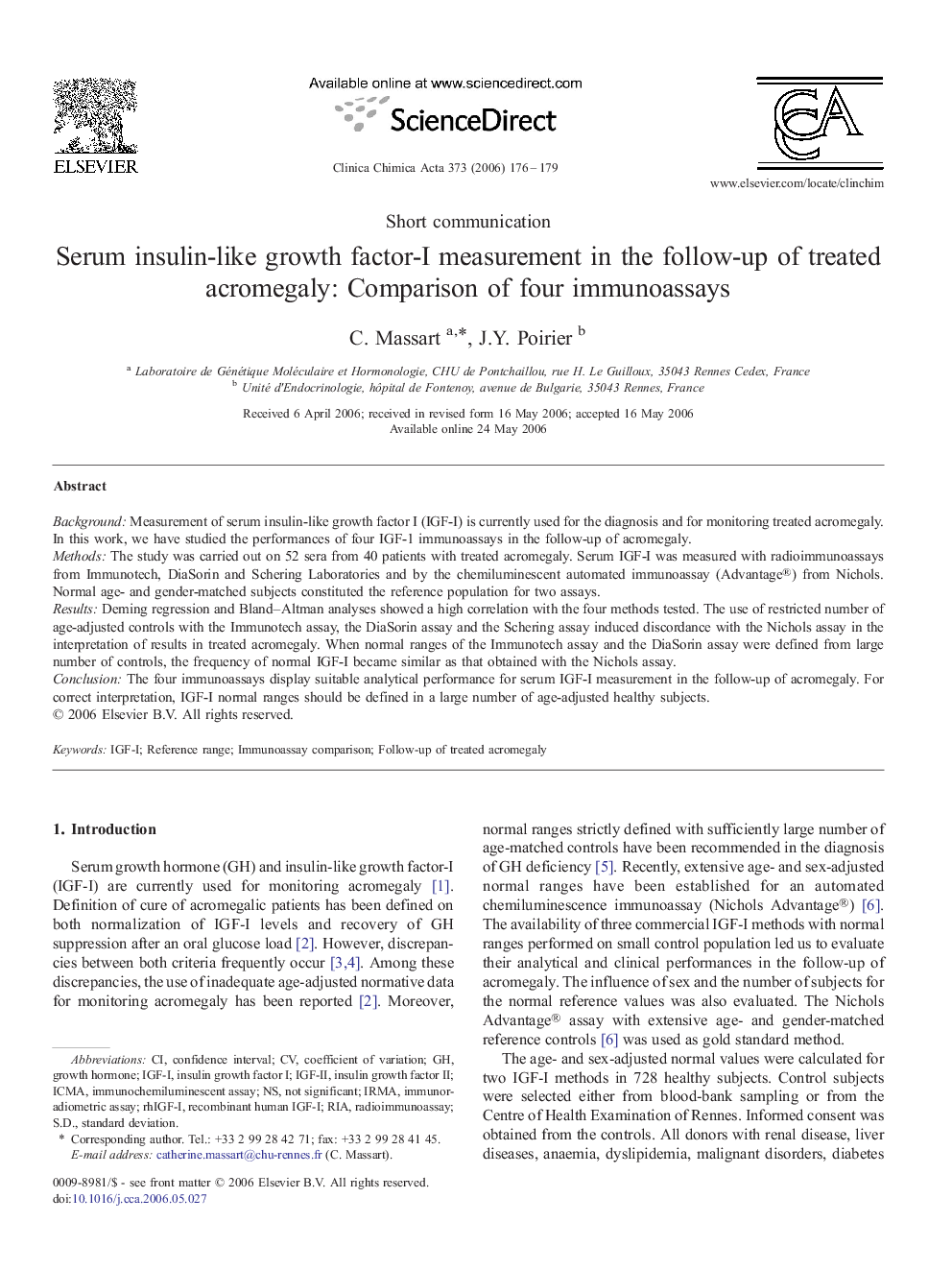| Article ID | Journal | Published Year | Pages | File Type |
|---|---|---|---|---|
| 1968003 | Clinica Chimica Acta | 2006 | 4 Pages |
BackgroundMeasurement of serum insulin-like growth factor I (IGF-I) is currently used for the diagnosis and for monitoring treated acromegaly. In this work, we have studied the performances of four IGF-1 immunoassays in the follow-up of acromegaly.MethodsThe study was carried out on 52 sera from 40 patients with treated acromegaly. Serum IGF-I was measured with radioimmunoassays from Immunotech, DiaSorin and Schering Laboratories and by the chemiluminescent automated immunoassay (Advantage®) from Nichols. Normal age- and gender-matched subjects constituted the reference population for two assays.ResultsDeming regression and Bland–Altman analyses showed a high correlation with the four methods tested. The use of restricted number of age-adjusted controls with the Immunotech assay, the DiaSorin assay and the Schering assay induced discordance with the Nichols assay in the interpretation of results in treated acromegaly. When normal ranges of the Immunotech assay and the DiaSorin assay were defined from large number of controls, the frequency of normal IGF-I became similar as that obtained with the Nichols assay.ConclusionThe four immunoassays display suitable analytical performance for serum IGF-I measurement in the follow-up of acromegaly. For correct interpretation, IGF-I normal ranges should be defined in a large number of age-adjusted healthy subjects.
